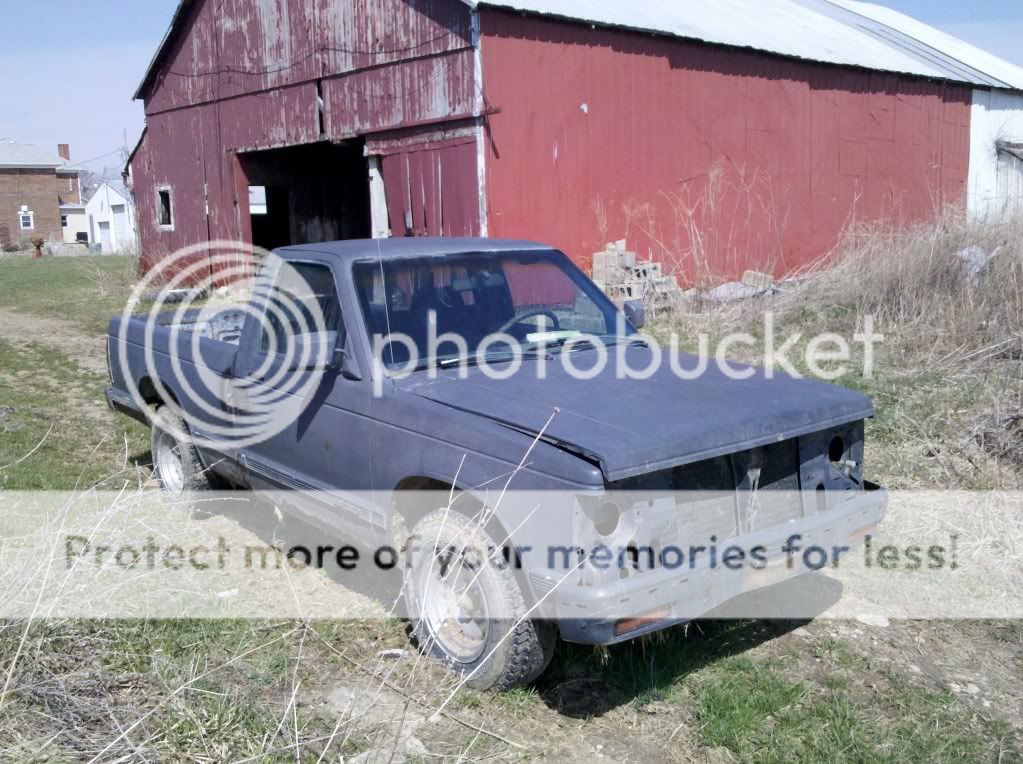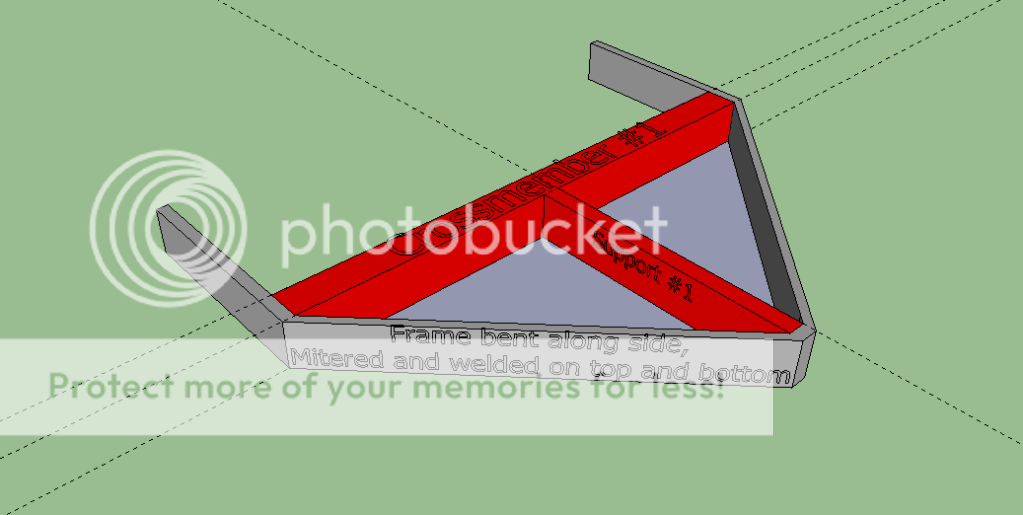Hey guys...
So, I got this old truck last fall for next to nothing. Its an s10, with 324,000 miles. Its pretty much done for. I made a few videos with it, before one of my friends destroyed the clutch in it.
The body is really beat up, the inside is a wreck, and its not drivable. I don't think its worth fixing up. If i did, i highly doubt I could get my $500 out of it.

Anyway, instead of spending my (or his, rather) clutch money on a clutch, I'd rather keep it, sell some parts, and scrap the rest, excluding the back half, and the frame. Its a Florida truck, and the frame is solid. As is the bed, its rusted through along the wheel well on one side, but is otherwise good as new. Beat and dented to hell, yes, having a questionable integrity, no.
I could really use a good trailer, and this is cheaper than building one from scratch, or buying one. I need some way to move scrap without feeling guilty about using my beautiful good truck.
But, I've never built a trailer before.
I trust my welds, I can pass a bend test on an open root weld in or out of position, and I'd feel completely safe following this thing down the highway. I feel most confident in my smaw welds, so I'd defiantly "stick" with that.
I've never designed something like this, so I thought I'd share my plans. About a foot in front of the bed (I might want to add a toolbox), I'd bolt a crossmember (see picture), and directly in front of that, and then notch the top and bottom of the "C" frame. I'd then heat it up and bend it inwards, and then tack everything into position, and start welding.
For the added support piece, I'd weld the big "T" joint, and where the ends meet the pates at the ends, with a 1/8" 6010 root pass, and then do two weave beads over it with 1/8" 7018. For the top, I'd run the same root pass, and cover it in a weave, and on the bottom, same root, but with stringers. Crossmember would be made out of rectangular tubing, 3/16" thick.
Or, I guess I could leave a gap and do it all open root. I think thats the way to go here.
And for the frame; thats not very thick, so I'd probably leave a tiny opening (<1/16), and run stringers over it with 3/32 7018, on both the top, and the bottom.


I just want to know what yall think of this. I know I can do the welds, its mostly the design and the choice of what welds to do that I'm not sure about. And any feedback would be great. Its supposedly not very hard to register a trailer here in ohio (especially one under 2,000 lbs), but I'll defiantly look into that more before I start ordering steel, and sawing my truck in half. And yes, I do have a title for this truck, if that makes a difference.
So, I got this old truck last fall for next to nothing. Its an s10, with 324,000 miles. Its pretty much done for. I made a few videos with it, before one of my friends destroyed the clutch in it.
The body is really beat up, the inside is a wreck, and its not drivable. I don't think its worth fixing up. If i did, i highly doubt I could get my $500 out of it.

Anyway, instead of spending my (or his, rather) clutch money on a clutch, I'd rather keep it, sell some parts, and scrap the rest, excluding the back half, and the frame. Its a Florida truck, and the frame is solid. As is the bed, its rusted through along the wheel well on one side, but is otherwise good as new. Beat and dented to hell, yes, having a questionable integrity, no.
I could really use a good trailer, and this is cheaper than building one from scratch, or buying one. I need some way to move scrap without feeling guilty about using my beautiful good truck.
But, I've never built a trailer before.
I trust my welds, I can pass a bend test on an open root weld in or out of position, and I'd feel completely safe following this thing down the highway. I feel most confident in my smaw welds, so I'd defiantly "stick" with that.
I've never designed something like this, so I thought I'd share my plans. About a foot in front of the bed (I might want to add a toolbox), I'd bolt a crossmember (see picture), and directly in front of that, and then notch the top and bottom of the "C" frame. I'd then heat it up and bend it inwards, and then tack everything into position, and start welding.
For the added support piece, I'd weld the big "T" joint, and where the ends meet the pates at the ends, with a 1/8" 6010 root pass, and then do two weave beads over it with 1/8" 7018. For the top, I'd run the same root pass, and cover it in a weave, and on the bottom, same root, but with stringers. Crossmember would be made out of rectangular tubing, 3/16" thick.
Or, I guess I could leave a gap and do it all open root. I think thats the way to go here.
And for the frame; thats not very thick, so I'd probably leave a tiny opening (<1/16), and run stringers over it with 3/32 7018, on both the top, and the bottom.


I just want to know what yall think of this. I know I can do the welds, its mostly the design and the choice of what welds to do that I'm not sure about. And any feedback would be great. Its supposedly not very hard to register a trailer here in ohio (especially one under 2,000 lbs), but I'll defiantly look into that more before I start ordering steel, and sawing my truck in half. And yes, I do have a title for this truck, if that makes a difference.

